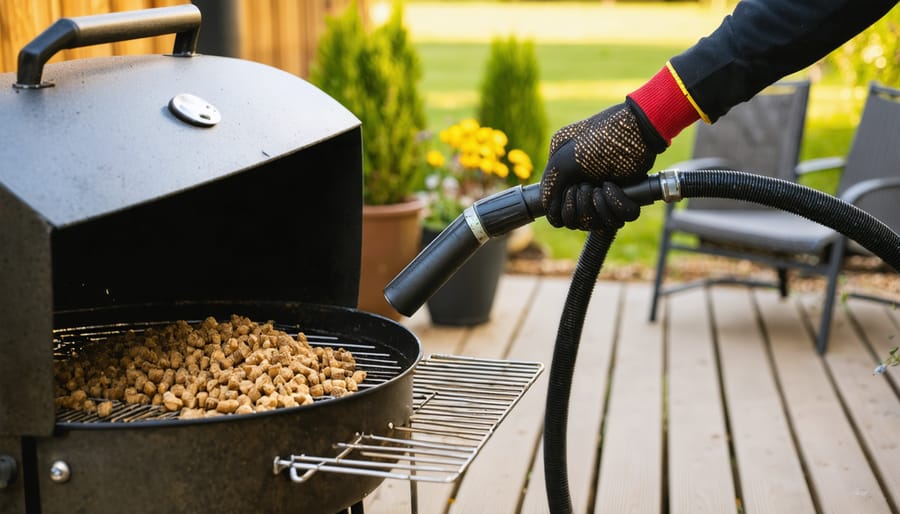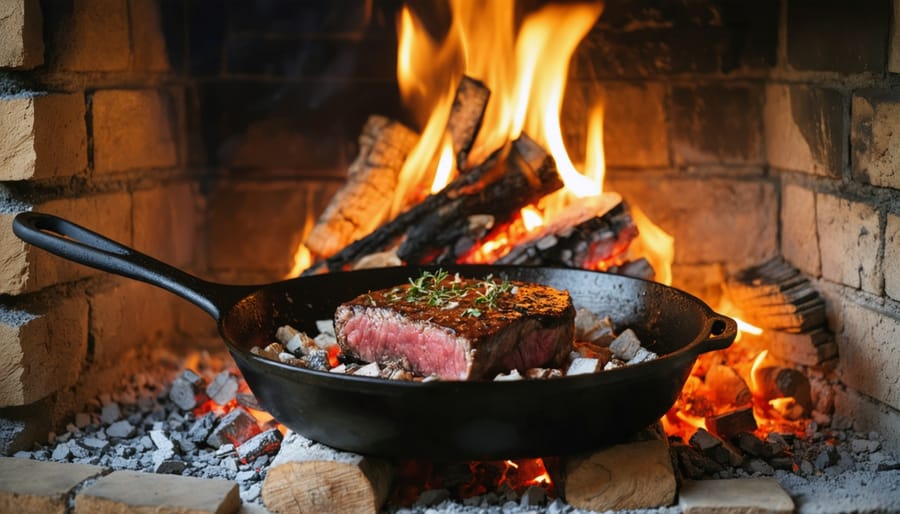Fireplaces have long been a source of warmth and ambiance in homes. If you’re a fireplace owner or contemplating installing one, you might be wondering, “Do I need a fireplace grate?”
In this comprehensive guide, we’ll explore the world of best fireplace grates, their benefits, types, materials, sizing, and more.
By the end, you’ll have a clear understanding of whether a fireplace grate is the right addition to your hearth.
The Role of a Fireplace Grate
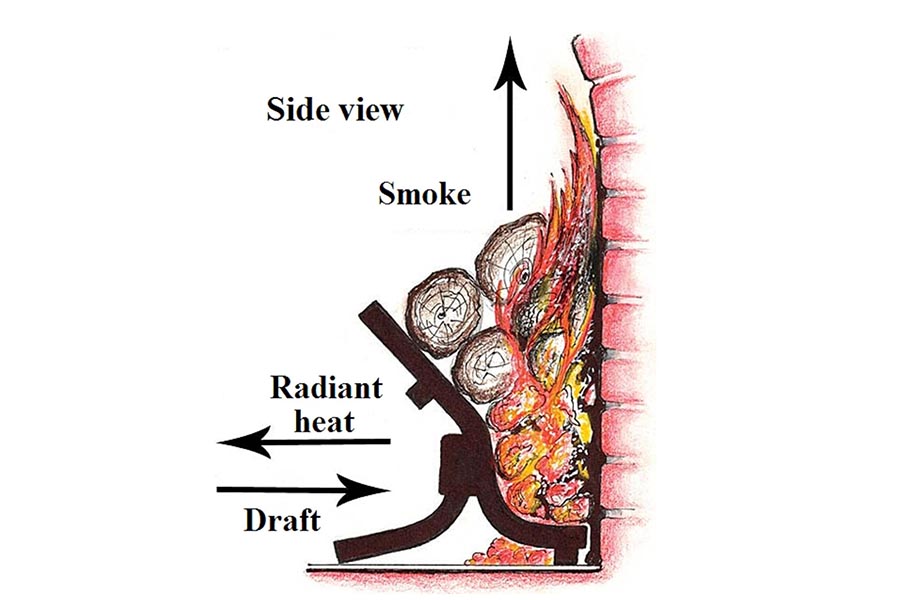
To appreciate the value of a fireplace grate or fire starter, let’s first understand its role. A fireplace grate is a fundamental accessory that elevates the firewood, allowing air to circulate beneath it.
This air circulation promotes efficient combustion, resulting in a more effective and warmer fire.
Additionally, a grate helps protect the fireplace floor from direct contact with the flames and will burn wood into ash, prolonging its lifespan.
Fireplace Grates Types
Fireplace grates come in various shapes and sizes to suit different fireplaces and preferences. Two primary types are cast iron and steel grates.
Cast iron grates are known for their durability and exceptional heat retention, while steel bar grates offer a lighter and more affordable alternative.
You can also choose between basket-style and flat-bottom grates, each with its advantages.
Exploring Cast Iron vs. Steel Grates Materials
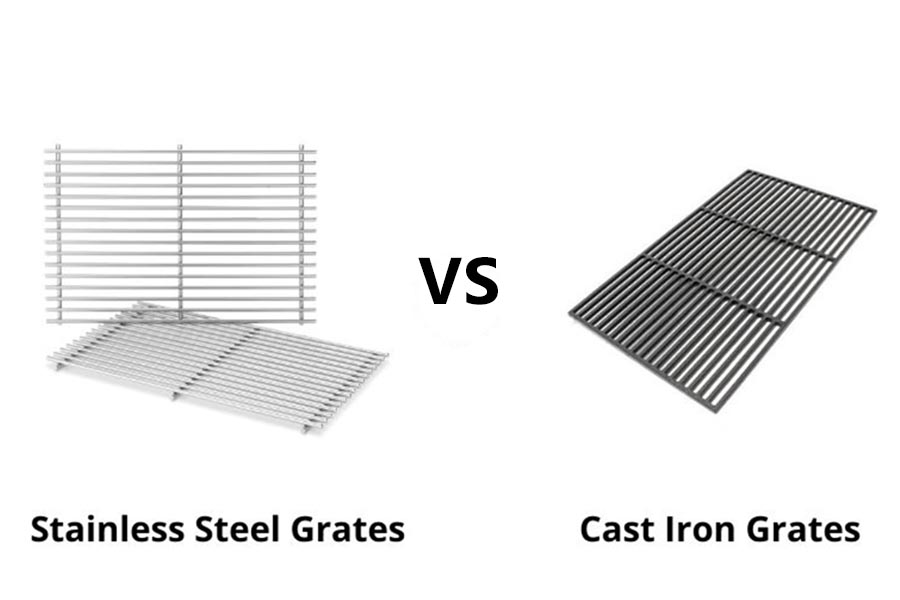
When deciding between cast iron and steel grate, consider your specific needs.
The cast iron fireplace grate is robust and can endure high temperatures, making them ideal for wood-burning fireplaces.
Steel grates, on the other hand, are lighter and easier to move but may require more frequent replacement if subjected to intense heat.
Selecting the Right Style for Your Hearth
Fireplace grates aren’t just functional; they can also enhance the aesthetics of your hearth. Traditional or contemporary designs offer different looks to match your decor. The choice of style should harmonize with your fireplace’s overall theme.
What Size Fireplace Grate Do You Need?
Determining the right size for your fireplace grate is essential for optimal performance and safety. Here’s a closer look at how to select the correct maximum grate size:
- Measure Your Fireplace: Start by measuring the width, depth, and height of your fireplace. Standart fireplace dimensions will help you identify the maximum size your grate can be to fit comfortably.
- Allow for Clearance: Ensure that there is enough space between the grate and the fireplace walls. A minimum of 2 inches of clearance on each side is recommended to allow proper airflow for combustion.
- Consider Log Size: Take into account the size of the firewood you plan to burn. Ideally, the grate should be slightly smaller than the width of your fireplace but large enough to accommodate the length of the logs comfortably.
- Balance Aesthetics and Functionality: While functionality is crucial, consider the visual aspect too. The grate should fit well within the fireplace, complementing its appearance. Some prefer a snug fit, while others prefer a slightly smaller grate for a more minimalist look.
- Custom Grates: If you have unique fireplace dimensions or specific design preferences, consider custom-made grates. These can be tailored to your exact requirements for a perfect fit.
Choosing the right size fireplace grate is essential to ensure efficient fire burning, proper airflow, and a visually pleasing appearance.
By measuring your fireplace accurately and considering both functional and aesthetic aspects, you can select a grate that enhances your fireplace experience.
How Do I Choose the Best Fireplace Grate?
Selecting the right fireplace grate is vital for efficient, safe, and visually pleasing fires. Consider the following factors:
- Material: Choose between durable cast iron for wood fires or versatile steel for various designs.
- Size and Fit: Measure your fireplace’s width and depth, allowing 2 inches of clearance on each side for proper airflow.
- Style: Select a design that matches your decor, whether traditional or contemporary.
- Log Type: Opt for a basket-style grate for larger logs or a flat-bottom one for a sleek look.
- Personalization: Explore customization options to make your fireplace unique.
- Accessories: Consider extras like ash pans or ember screens for added functionality.
- Budget and Quality: Invest in a higher-quality grate for durability and performance.
- Reviews: Read user reviews and seek recommendations to make an informed choice.
- Maintenance: Ensure the grate’s maintenance requirements align with your preferences.
- Safety: Confirm that the grate meets safety standards to prevent accidents.
By considering these factors, you can choose the best fireplace grate for an efficient, safe, and enjoyable fireplace experience.
What Is the Best Material for Fireplace Grates?
When it comes to selecting the best material for fireplace grates, there are two primary options to consider: cast iron and steel. Each material has its advantages, and the choice depends on your specific needs and preferences.
Cast Iron Fireplace Grates
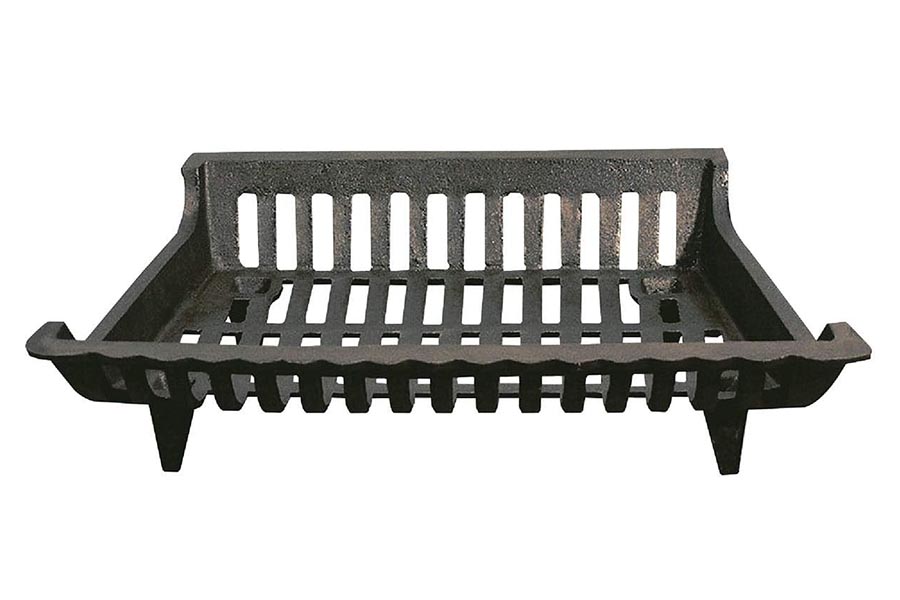
Cast iron grates are revered for their durability and exceptional heat retention properties. They can withstand the intense heat generated by wood-burning fires without warping or deteriorating.
One of their most significant advantages is their ability to retain and radiate heat, making them ideal for those seeking long-lasting warmth in their homes.
These grates also have a timeless and classic appearance, which complements traditional fireplace settings beautifully.
Steel Fireplace Grates
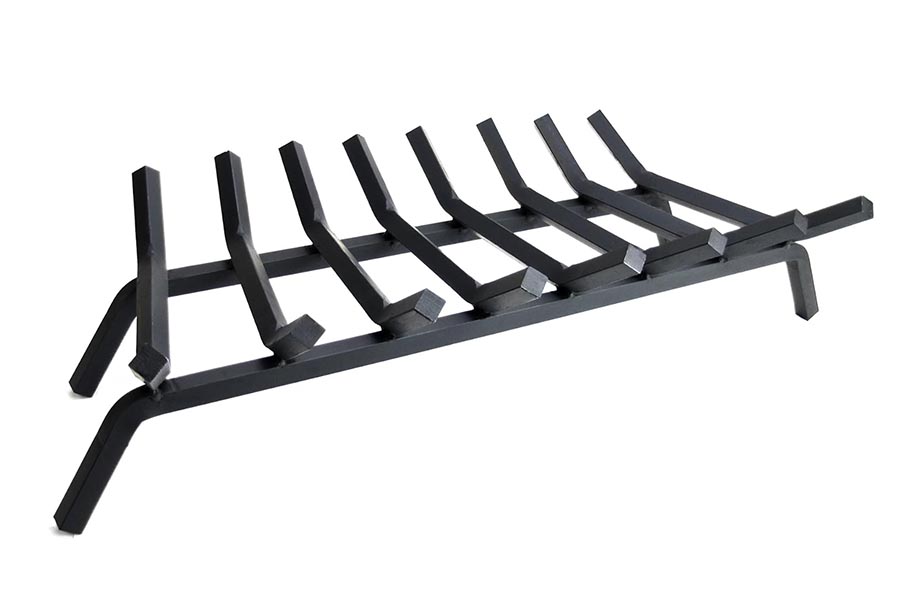
On the other hand, steel fireplace grates offer a lightweight and cost-effective alternative. They are easier to handle and more budget-friendly than cast iron grates.
Steel grates come in a wide range of designs, offering versatility in matching your fireplace’s aesthetics. While they may not retain heat as effectively as cast iron, they remain a practical choice, especially if you need to move the grate frequently or prefer a more contemporary look.
In summary, the best material for your fireplace grate depends on your specific requirements.
Cast iron is favored for its durability and heat retention, making it an excellent choice for wood-burning fireplaces that require consistent warmth. Steel grates, while lighter and more budget-friendly, are versatile and ideal for those who prioritize design variety and convenience.
Ultimately, the choice between the two materials should align with your heating needs, fireplace style, and budget considerations.
Why Choose Cast Iron Fireplace Grates?

Cast iron fireplace grates offer a range of unique benefits that make them a top choice for homeowners seeking efficiency, durability, and timeless charm in their hearth.
In this section, we’ll explore the exceptional advantages of cast iron grates and why they continue to be a popular fireplace accessory.
The Unique Benefits of Cast Iron Grates
Cast iron grates stand out due to their remarkable heat retention capabilities. These grates absorb and radiate heat long after the fire has burned down, ensuring that your fireplace remains an efficient heat source for your home.
The ability to maintain warmth makes cast iron grates an excellent choice for those seeking consistent heat output and long-lasting comfort.
Why Cast Iron Grates Is a Timeless Fireplace Accessory
Beyond their functionality, cast iron grates bring a timeless and classic aesthetic to your fireplace. Their elegant design and enduring appeal make them a coveted addition to traditional hearth settings.
Cast iron grates have a way of adding sophistication and character to your fireplace, elevating the overall ambiance of your living space.
Installing Your Fireplace Grate

Proper installation is crucial for the safe and effective use of your fireplace grate. In this section, we will guide you through the step-by-step process to ensure that your grate fits securely within your fireplace.
Properly installing a fireplace grate is essential to ensure its stability and functionality. To install your fireplace grate:
- Measure Your Fireplace: Begin by measuring the width, depth, and height of your fireplace to ensure the grate fits comfortably.
- Position the Grate: Place the grate inside the fireplace, ensuring it sits securely and level.
- Allow for Clearance: Leave at least 2 inches of clearance on each side of the grate to facilitate proper airflow for combustion.
- Adjust for Optimal Airflow: Ensure that the grate allows for adequate airflow beneath the burning wood, promoting more efficient fire.
- Stability Check: Confirm that the grate is stable and doesn’t wobble. This is crucial for safety.
Maintenance Tips for Fireplace Grates
Maintaining your fireplace grate is essential for long-lasting performance. Here are some maintenance tips:
- Regular Cleaning: Remove ashes and debris from the grate after each use to prevent blockages and improve airflow.
- Inspect for Damage: Routinely inspect the grate for signs of wear, such as cracks or warping. Replace damaged grates promptly.
- Season Cast Iron Grates: If you have a cast iron grate, periodically season it by applying a thin layer of vegetable oil to prevent rust.
- Keep Logs and Debris Clear: Ensure that logs and debris don’t accumulate on the grate, as this can obstruct airflow and affect combustion efficiency.
Fireplace Grates for Wood-Burning Fireplaces
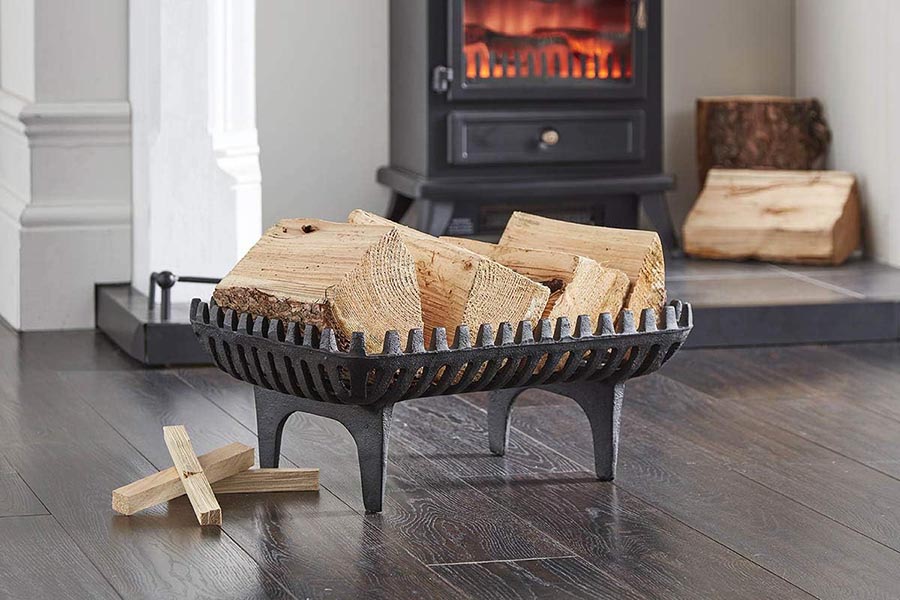
Using a grate in a wood-burning fireplace offers several advantages:
- Improved Airflow: Grates elevate logs, allowing air to circulate beneath them. This results in more efficient and even burning.
- Reduced Wear on Fireplace Floor: Grates protect the fireplace floor or your fireplace pit area from direct contact with burning logs, reducing the risk of damage.
- Enhanced Safety: Grates help prevent logs from rolling out of the fireplace, reducing the risk of accidents.
Fireplace Grates for Gas Fireplaces
While gas fireplaces don’t require grates for burning, they can still be used for aesthetic purposes:
- Aesthetic Enhancement: Grates can add a decorative element to your gas fireplace, making it visually appealing even when not in use.
- Log Placement: Some gas fireplaces come with imitation logs, and a grate can help position them realistically for a more authentic appearance.
Safety Considerations with Fireplace Grates
Safety is paramount when using fireplace grates. Consider the following:
- Ember Control: Grates should have a design that prevents embers from escaping and potentially causing fires.
- Childproofing: If you have children or pets, choose grates with appropriate safety features to prevent accidental contact with hot surfaces.
- Floor Protection: Use a hearth rug or fire-resistant mat to protect the floor in front of the fireplace from heat and potential sparks.
Do You Need a Grate for an Electric Fireplace?
In most cases, electric fireplaces do not require grates since they do not produce actual flames or generate heat from burning logs.
However, some electric fireplaces come with decorative grates for aesthetic purposes.
The Final Verdict
Deciding whether to use a fireplace grate depends on your specific needs and preferences. Consider factors like the type of fireplace you have, your aesthetic preferences, and safety requirements.
Fireplace grate heaters can enhance efficiency, protect your fireplace, and smoke, and contribute to the overall ambiance of your hearth.


